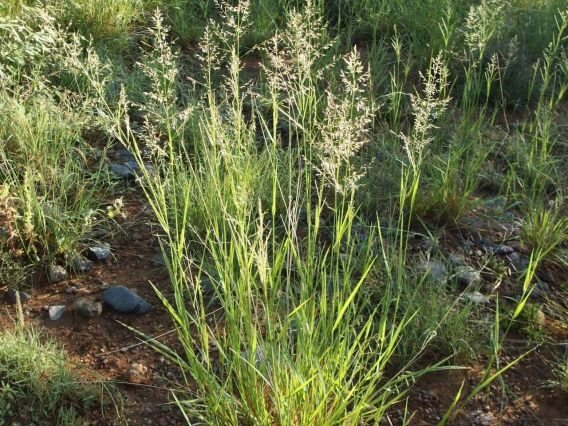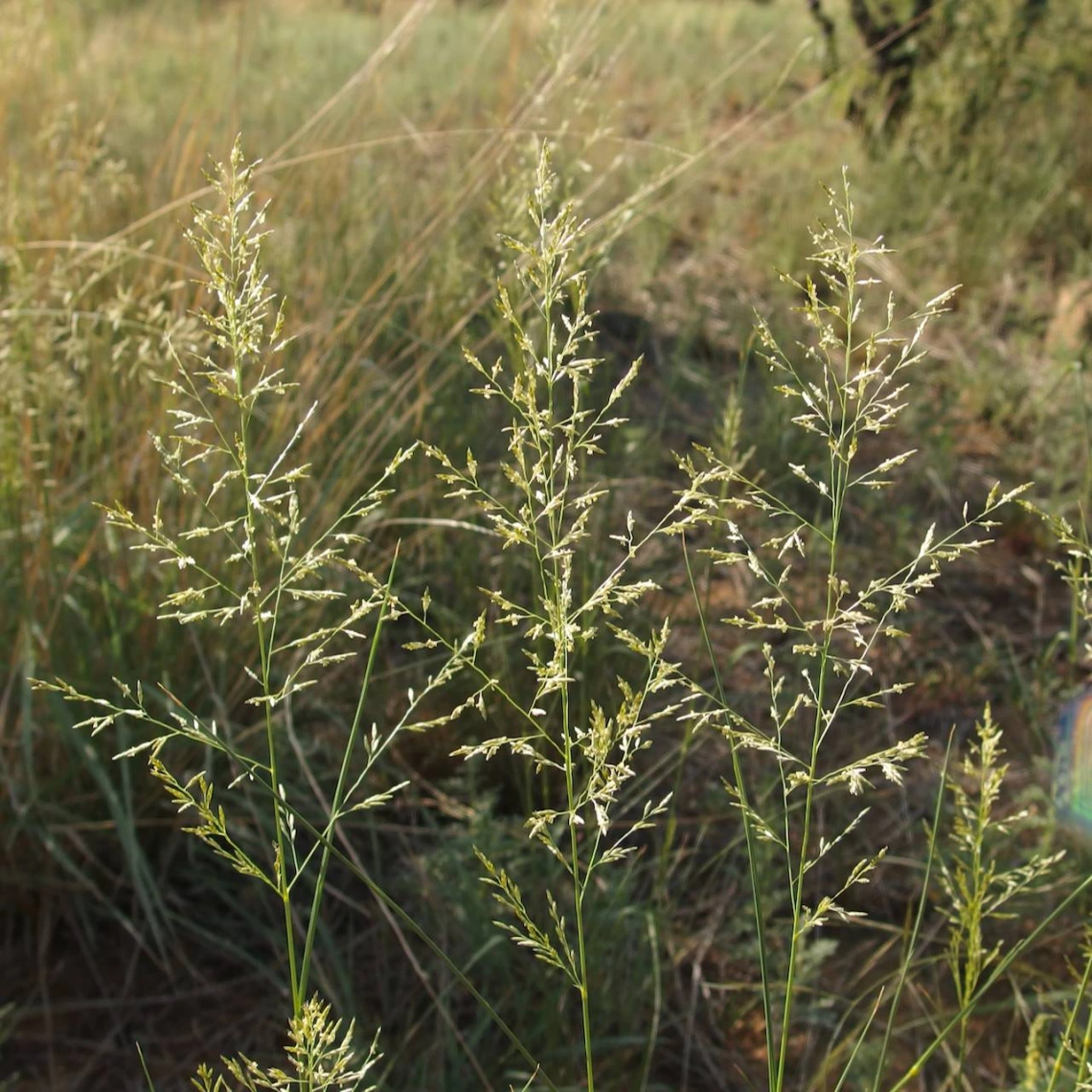Image

Sue Carnahan
Common Name(s)
Lehmann lovegrass
African lovegrass
Scientific Name
Eragrostis lehmanniana
Family
Grass family (Poaceae)
Reasons for concern
Lehmann lovegrass grows and reproduces quickly. It grows to form dense mats, which make it near impossible for other native species to grow, decreasing native biodiversity to the point of monoculture. Its high volume dry growth is better fuel for fires than native grasses, which increases the intensity and frequency of these dangerous fires. Ehmann lovegrass then recovers quicker after disturbance than other plants, which furthers the cycle of fires.
Classification
Non-native
Botanical description
Erect or ascending bunchgrass
Leaves
Smooth to slightly rough linear blades
Stem(s)
Wiry, upwards of 2 feet tall, grow from a slightly open bunch, mostly erect with some stems lying along the ground
Inflorescence
3-7 inch long ½-3 inches wide arrow shaped cluster of smaller branches with 3-7 spikelet florets that are yellow at maturity
Roots
Form at the nodes of stems that lay along the ground
Native to
Southern Africa
Where it grows
Disturbed areas, sandy soils, along washes and roadsides, up to 6,000 ft elevation.
Lifecycle
Perennial
Reproduction
Seed, vegetative by rooting at the nodes (stolons)
Weedy Characteristics
Lehmann lovegrass prolifically produces seed and can do so when it's only a few inches tall. These seeds travel large distances by wind, water, animals, or people and can remain dormant in long, dry periods. In ideal conditions, germination rate can be 90%. Lehmann lovegrass grows and spreads quickly.
Look-alike Plants
Plains lovegrass (Eragrostis intermedia) can be distinguished by having a larger, broader pyramidal inflorescence with smaller individual spikelets. They are sometimes more purple tinged than Lehmann lovegrass.
Control Strategies
Hand pulling is most effective when soil is damp. Glyphosate, imazapyr, and sethoxydim herbicides are effective. Glyphosate must be applied when the plant is green. Herbicides are more effective when used after mowing. For all treatments, follow up is necessary.
References
- https://www.sdcwma.org/species/lehmannlovegrass.php
- https://en.wikipedia.org/wiki/Eragrostis_lehmanniana
- https://www.fs.usda.gov/database/feis/plants/graminoid/eraleh/all.html
- https://swbiodiversity.org/seinet/taxa/index.php?taxon=Eragrostis+lehmanniana&formsubmit=Search+Terms
- https://www.fs.usda.gov/Internet/FSE_DOCUMENTS/fseprd563034.pdf



